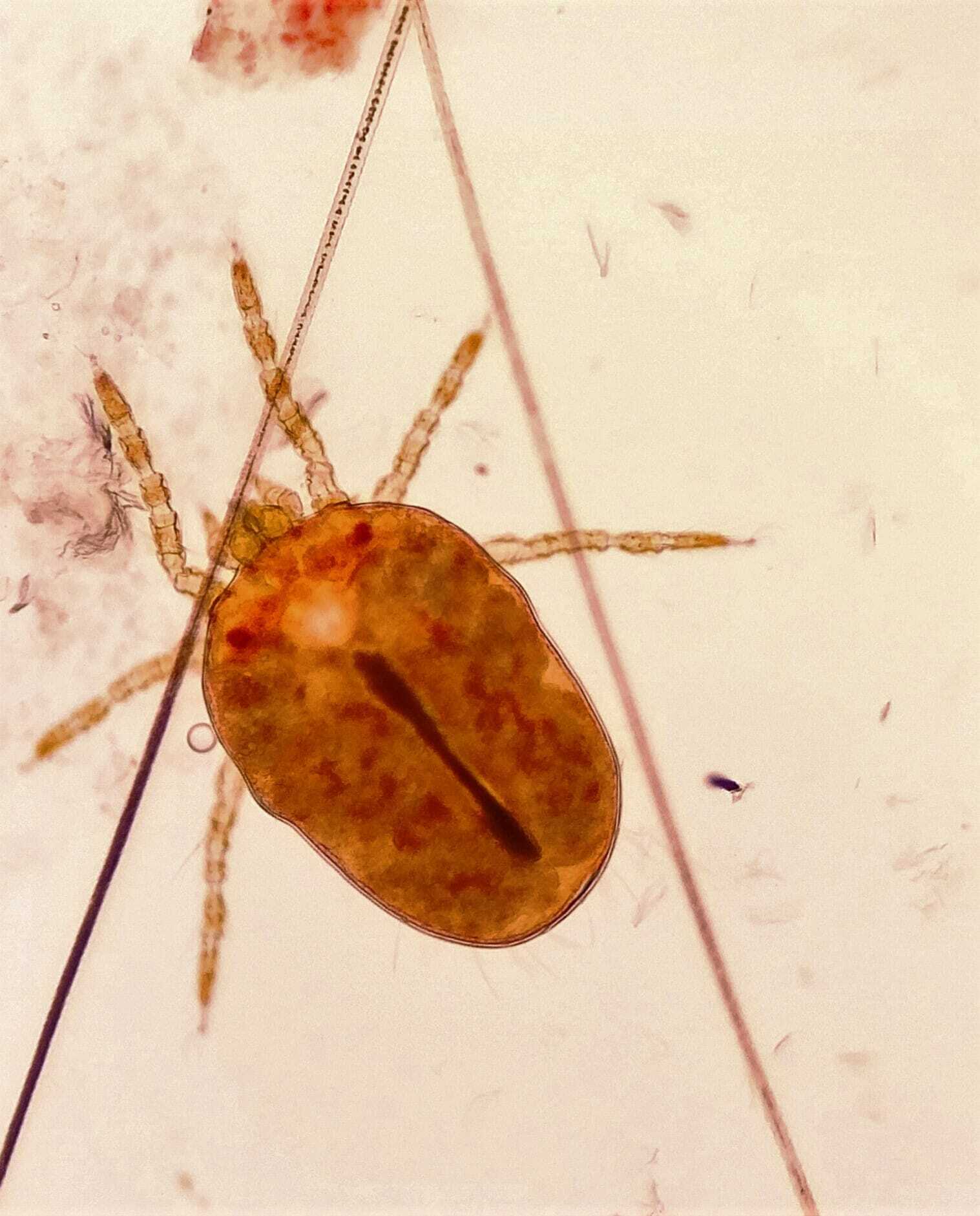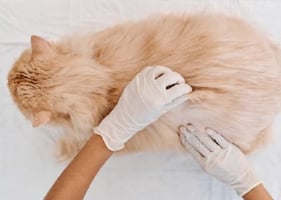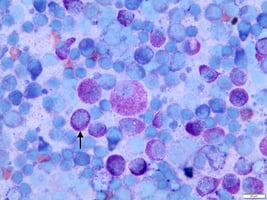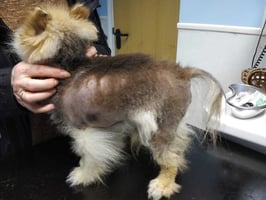Otodectes cynotis
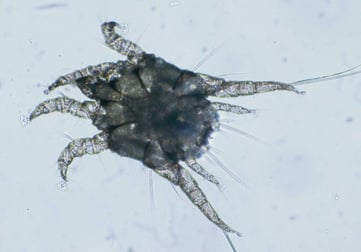
These mites are generally associated with bilateral otitis in kittens and young cats, but can occasionally pose a problem in older cats. They mainly live in the ear canal and are highly contagious to in-contact animals, as the mite is not host specific. While the mites live mainly in the ear canals, they can venture on to the face or the dorso-lumbar and tail base areas. Depending on the site, the findings range from dry brown crumbly exudate in the ear canals to erythemato-ceruminous otitis, self-induced alopecia and/or erosive lesions around the ears. In more severe cases, where there is a rupture of the tympanic membrane, vestibular signs may be present. Adult mites ( Figure 1), larvae, nymphs and eggs are generally easy to find on microscopical examination of the ear wax mounted in liquid paraffin. There are a few active ingredients licensed for the treatment of otoacariasis. They include moxidectin, selamectin, fluralaner and sarolaner. Fluralaner is reported as being effective against Otodectes cynotis (Taenzler et al., 2018).
Cheyletiella spp.
Cheyletiella spp. live on the skin surface and feed on keratinous debris. C. blakei is generally associated with cat infestations, but C. yasguri (associated with dogs) and C. parasitovorax (associated with rabbits) have also been found on cats. They can pose a problem in young animals and in catteries, as they can survive in the environment for several days and adult cats can be asymptomatic carriers. Clinical signs range from pruritus, scaling, papulocrustous (miliary) lesions and self-induced alopecia. The presence of adult mites or eggs on acetate tapes or skin scrapings confirm the diagnosis. They can be difficult to find in cats if mite numbers are low or reduced by overgrooming, and so history and response to treatment can be useful in their diagnosis. Currently there are no specific licensed products for the treatment of Cheyletiella spp. in cats. Topical applications of selamectin, moxidectin or fipronil and systemic administration of milbemycin oxime are highly effective. Repeated treatment is recommended depending on the product used. The environment should also be cleaned, vacuumed and treated with a permethrin-containing product.Demodex spp.
Three species of Demodex mites (D. gatoi, D. cati and an unnamed species) have been associated with skin disease in cats. D. gatoi is the short-bodied mite ( Figure 2) found in the stratum corneum. It is contagious to in-contact cats; pedigree cats and breeding cats appear to be predisposed (Saari et al., 2009). The cats often exhibit pruritus and the clinical signs range from focal ( Figure 3) to symmetrical and generalised alopecia and self-induced dermatitis.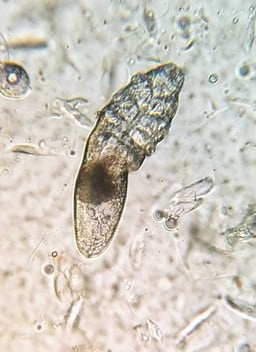
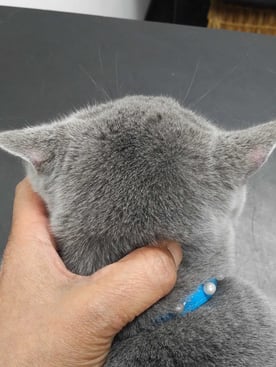
D. cati is the long-bodied mite found in hair follicles and in the ear canals. It is mainly associated with immunosuppres sion (eg FIV, FeLV, neoplasia, immunosuppressive drugs, diabetes mellitus). Cats with this mite infestation have variable levels of pruritus, erythema, scaling, crusting, alopecia and comedones. In some, ceruminous otitis externa may be the only sign. Often there is a history of systemic disease or long-term immunosuppressive treatment.
An unnamed Demodex mite with a blunted abdomen has been identified by PCR amplification (Ferreira et al., 2015). It has been found in the hair follicles concurrently with D. cati and has been associated with immunosuppression and Mycoplasma felis infection (Löwenstein et al., 2005). D. cati is easily found on skin scrapings, adhesive tapes and microscopical examination of cerumen mounted in liquid paraffin; however, D. gatoi can be difficult to find due to persistent grooming and removal of the mites. In such cases faecal flotation may aid diagnosis, but is not 100 percent diagnostic.
In those cases where infection is suspected, trial treatment with an appropriate miticidal product such as an isoxazoline is recommended. The isoxazolines are effective and are used off-label. Fluralaner (Matricoti et al., 2017; Duangkaewand et al., 2018) and sarolaner (author experience) are efficacious against D. gatoi. Also effective are 2% lime sulphur dips, but compliance with this treatment can be an issue. It is malodourous, it can bleach black cats and topical application can be difficult. It can take several months of treatment before the cats stop itching. Because this is a contagious mite, in-contact cats should be treated. The same treatments can be used for D. cati; however, the prognosis depends on the underlying disease, which often tends to have a guarded prognosis.
Neotrombicula autumnalis
The six-legged larval stages of Neotrombicula autumnalis, also known as harvest mites ( Figure 4), are parasitic and tend to infest from about June to October but it does depend on the climate. They attach to the host to feed for several days after which they detach, moult and live as free-living mites. The adult mites are usually present in decaying material. The larval stage, once attached to host, is not contagious to in-contact animals. Severe lesions such as excoriations, ulceration, crusting and erythema associated with pruritus are seen on the face, ears, legs and ventral areas around the nipples. In cats, they can be found in Henry’s pocket of the ear ( Figure 5).
The mites are visible to the naked eye as orange dots among the crusts, but if in doubt they can be identified on superficial skin scrapes. There are no licensed treatments against these mites. Topical spot-on formulations of 10% (w/v) fipronil (Cadiergues et al., 2017) and fipronil spray have been shown to be effective and repeating every three to five days is recommended in individuals during the summer and autumn in areas where there is a high incidence.
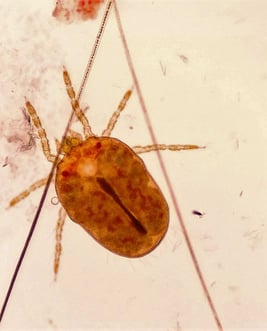
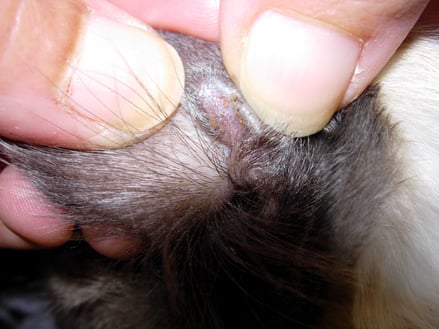
Notoedres cati
This mite is from the family Sarcoptidae and has a life cycle like that of Sarcoptes scabiei (see below). It is contagious to in-contact cats, dogs and humans. This mite is not found in the UK but may be a problem where animals have travelled to Mediterranean countries, or been imported from there. It lives in the epidermis and feeds on cutaneous debris and exudate. The clinical signs in affected animals initially start on the face and ears and progressively involve other areas. Crusting, erythema, alopecia, lichenification and hyperpigmentation with variable pruritus are seen. Usually large numbers of mites are found on skin scrapings.
Licensed treatments include moxidectin and imidacloprid preparations (Hellmann et al., 2013). Selamectin (Itoh et al., 2004), doramectin (Delucchi et al., 2000) and ivermectin have also been reported as efficacious. Removal of the crusts using a shampoo with keratolytic and keratoplastic activity is recommended.
Sarcoptes scabiei
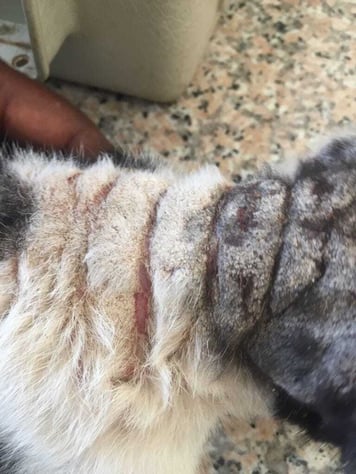
References (click to expand)
| Cadiergues, M., Navarro, C., Castilla-Castaño, E., Lecru, L. and Pressanti, C. | 2017 | Treatment of Neotrombicula species infestation in cats using a 10% (w/v) fipronil topical spot-on formulation: a pilot study. Journal of Feline Medicine and Surgery, 20, 587-590 |
| Curtis, C. | 2004 | Current trends in the treatment of Sarcoptes, Cheyletiella and Otodectes mite infestations in dogs and cats. Veterinary Dermatology, 15, 108-114 |
| Delucchi, L. and Castro, E. | 2020 | Use of doramectin for treatment of notoedric mange in five cats. Journal of the American Veterinary Medical Association, 216, 215-216 |
| Duangkaew, L. and Hoffman, H. | 2018 | Efficacy of oral fluralaner for the treatment of Demodex gatoi in two shelter cats. Veterinary Dermatology, 29, 262-262 |
| Ferreira, D., Sastre, N., Ravera, I., Altet, L., Francino, O., Bardagí, M. and Ferrer, L. | 2015 | Identification of a third feline Demodex species through partial sequencing of the 16S rDNA and frequency of Demodex species in 74 cats using a PCR assay. Veterinary Dermatology, 26, 239-e53 |
| Hellmann, K., Petry, G., Capari, B., Cvejic, D. and Krämer, F. | 2013 | Treatment of Naturally Notoedres cati-infested Cats with a Combination of Imidacloprid 10% / Moxidectin 1% Spot-on (Advocate® / Advantage® Multi, Bayer). Parasitology Research, 112, 57-66 |
| Lowenstein, C., Beck, W., Bessmann, K., and Mueller, R. S. | 2005 | Feline demodicosis caused by concurrent infestation with Demodex cati and an unnamed species of mite. Veterinary Record, 157, 290-292 |
| Malik, R., Mckellarstewart, K., Sousa, C., Krockenberger, M., Pope, S., Ihrke, P., Beatty, J., Barrs, V. And Walton, S. | 2006 | Crusted scabies (sarcoptic mange) in four cats due to Sarcoptes scabiei infestation. Journal of Feline Medicine and Surgery, 8, 327-339 |
| Matricoti, I. and Maina, E. | 2017 | The use of oral fluralaner for the treatment of feline generalised demodicosis: a case report. Journal of Small Animal Practice, 58, 476-479 |
| Mueller, R.S., Rosenkrantz, W., Bensignor, E., Karaś‐Tęcza, J., Paterson, T. and Shipstone, M.A. | 2020 | Diagnosis and treatment of demodicosis in dogs and cats. Veterinary Dermatology, 31, 4-26 |
| Saari, S.A., Juuti, K.H., Palojärvi, J.H., Väisänen, K.M., Rajaniemi, R.-L. and Saijonmaa-Koulumies, L.E. | 2009 | Demodex gatoi-associated contagious pruritic dermatosis in cats - a report from six households in Finland. Acta Veterinaria Scandinavica, 51, 40 |
| Taenzler, J., de Vos, C., Roepke, R.K.A. and Heckeroth, A.R. | 2018 | Efficacy of fluralaner plus moxidectin (Bravecto® Plus spot-on solution for cats) against Otodectes cynotis infestations in cats. Parasites & Vectors, 11, 595 |

